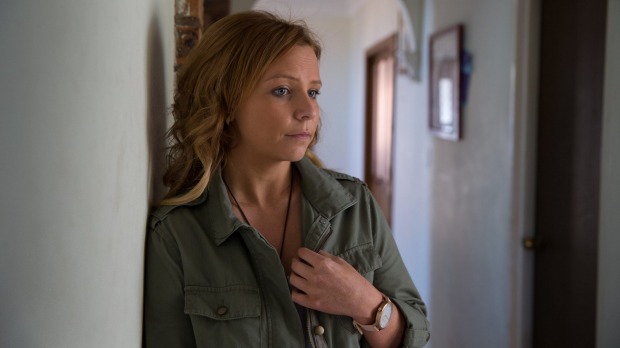
Nikki Quinn survived cancer as a child, but other issues, including guilt, remain. Photo: Janie Barrett
Nikki Quinn does not know why she was the one to survive childhood cancer when so many of her friends did not, but it eats her up.
She thinks about the little girl who used to come and blow her kisses when she was recovering from her second coma, bedridden and suffering from excruciating pain.
“I was really upset that I couldn’t go to her and my mum said, ‘When you can walk again you can go to Montana,’ and she kind of inspired me to walk again,” said Ms Quinn, who was diagnosed with leukemia aged 13.
Montana died a few days after her third birthday.
“I became very close to eight friends and I literally watched them die,” she said. “They fought just as hard as I did and for as long as I did, but for some reason they died and I didn’t.”
Childhood cancer survival rates have increased from virtually nil 60 years ago to 80 per cent, but a unique collaboration between the Children’s Cancer Institute and Sydney Children’s Hospital aims to bump it to 100 per cent.
The Zero Childhood Cancer project will analyse the unique cancer cells of every child diagnosed with the most aggressive forms of cancer.
Scientists will experiment in the laboratory to identify the drugs most likely to kill each child’s cancer and then work on a treatment plan with doctors.
The program will begin next year with a pilot study of 12 children and expand to a national clinical trial involving 120 children in 2017.
By 2020, it will be available to all children who have been diagnosed with a cancer type that has a less than 30 per cent survival rate, as well as those who have relapsed.
Children’s Cancer Institute executive director Michelle Haber? said the initiative was the first of its type and had been made possible by the mapping of the human genome in 2003 – originally a prohibitively expensive technology, but now cheap enough to make it feasible.
“We know that a one-size approach doesn’t fit all,” Professor Haber said.
“You can have two children who have essentially the same diagnosis, the same disease, the same treatment, but one will respond to the treatment and the other one won’t.”
Although survival rates had dramatically improved with the advent of chemotherapy, they had since plateaued. But this project was hoped to be the game changer that would wipe out the last of the fatal cancers, including certain types of brain cancer that killed almost all its victims.
“The only thing that the clinicians say when they’re diagnosed with that type of cancer is, ‘You should start making funeral arrangements and enjoy the time you have available with your child’.
“Now that’s not acceptable.”
Glenn Marshall, the director of the Kids Cancer Centre at the Sydney Children’s Hospital, said the project would allow doctors to take advantage of advances in chemistry over the past 15 years to tailor drugs to each patient.
“It’s a form of advocacy for children,” Professor Marshall said.
“Children don’t vote so there’s no one out there lobbying for them, and this is trying to use science to come up with better outcomes for them.”
The project will also identify which drugs may be best to counter the side effects of the treatment.
Ms Quinn, 24, still suffers from the effects of her chemotherapy, with osteoporosis, nerve damage, weak lungs and chronic fatigue.
Last year she was diagnosed with post traumatic stress syndrome and survivor’s guilt.
“I’ve kind of accepted that I won’t really get to go back to exactly what I was, but I’m helping other people now and if that’s where this journey has taken me, I’m OK with that.”
